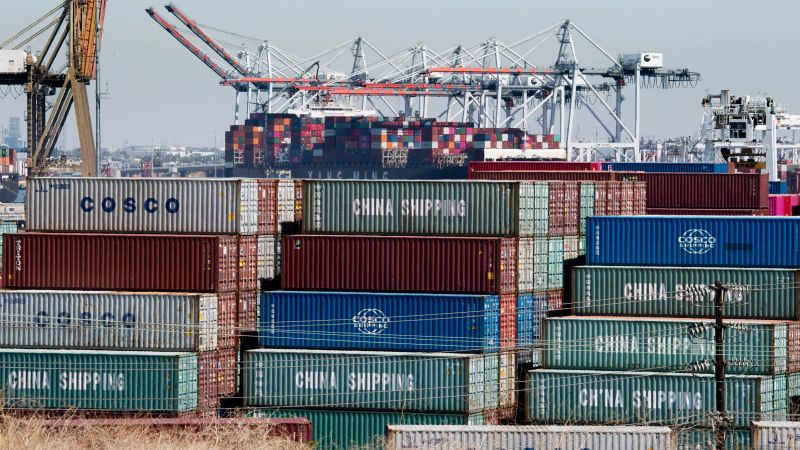American businesses can anticipate increased costs for importing certain foreign-made goods regardless of the outcome of the presidential election in November. Both former President Donald Trump and current President Joe Biden have expressed intentions to increase tariffs, particularly on Chinese-produced goods such as electric vehicles, semiconductors, and steel. While the candidates typically differ on policy issues, they both share a protectionist trade policy stance. Despite tariffs being popular politically, economists generally agree that they are costly tools that may not always benefit domestic industries as promised.
The disparities between Trump’s broad tariffs and Biden’s more targeted approach are significant. Trump initiated tariffs on various goods from multiple countries, including China, while Biden is focusing solely on increasing tariffs on Chinese-produced items. Trump is proposing additional tariffs of at least 10% on all imports from all countries, a tariff upward of 60% on all Chinese imports, and a 100% tariff on all cars made outside the US if he is re-elected. However, it remains unclear what legal authority Trump would use to implement such widespread tariffs. Studies have shown that Trump’s tariffs did not have the intended positive impact on US manufacturing and instead led to job losses. American importers have borne the brunt of the costs of these tariffs, with Americans having paid billions due to Trump’s imposed tariffs.
Trump used tariffs as a negotiation tactic, primarily aimed at hurting China’s economy and pressuring Beijing to address unfair trade practices, such as intellectual property theft and forced technology transfers. While Trump did achieve some commitments from China, such as increasing purchases of US goods under the Phase One agreement, China failed to fulfill many of its obligations. A Phase Two agreement was never reached during either the Trump or Biden administrations. Biden has decided to focus on increasing tariffs only on Chinese-made goods, aligning with his broader economic policies aimed at boosting domestic manufacturing, particularly in clean energy and semiconductor sectors.
Biden’s recent tariff hikes on Chinese-produced steel, aluminum, semiconductors, electric vehicles, and other products are seen as consistent with his efforts to strengthen domestic manufacturing in key industries. While some groups, such as steel and aluminum trade associations and unions, support these tariff increases, analysts question their effectiveness given that China accounts for a small percentage of US steel imports. Biden has faced political pressure to address China’s unfair trade practices, with Democratic senators from key states urging him to maintain or increase tariffs imposed by Trump. The senators argue that keeping these tariffs in place benefits American workers, manufacturers, and communities and holds China accountable for its anti-competitive practices.
In conclusion, regardless of the election outcome, American businesses can expect to face higher costs for importing foreign-made goods as both Trump and Biden have expressed plans to increase tariffs, particularly on Chinese-produced items. While tariffs may be politically popular, economists caution that they may not always yield the desired benefits for domestic industries. The differences between Trump’s broad tariff policies and Biden’s more targeted approach are significant, with Biden focusing solely on China for tariff increases. The effectiveness of these tariffs in addressing trade imbalances and unfair practices remains to be seen, with ongoing pressure on the administration to take a strong stance against China’s trade policies.


